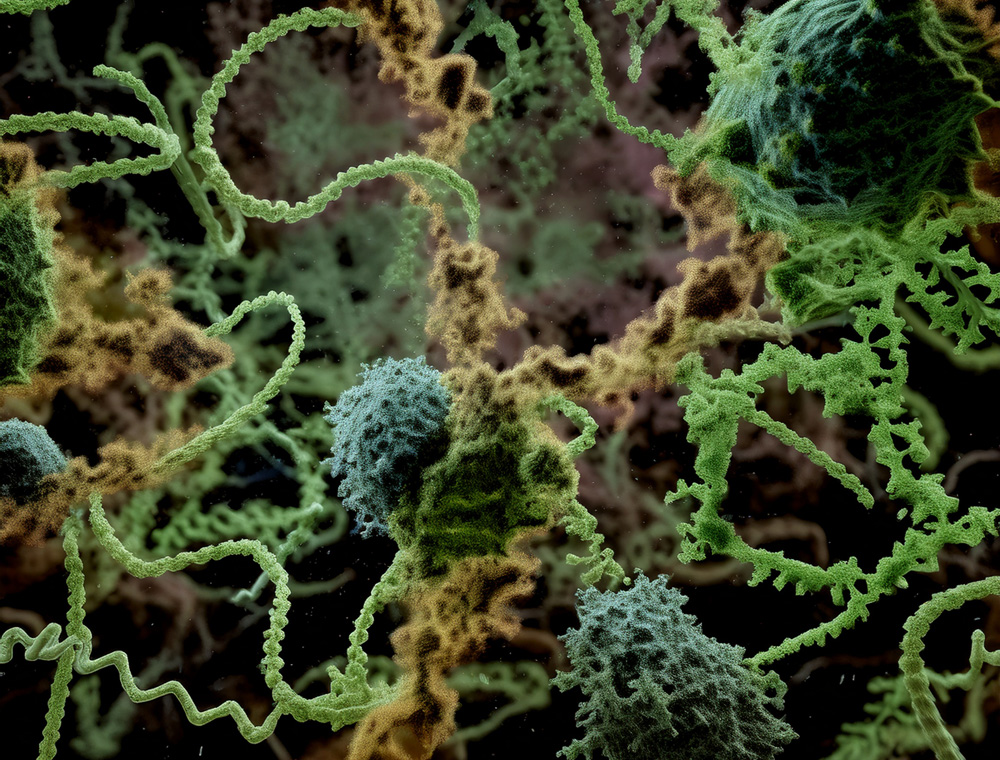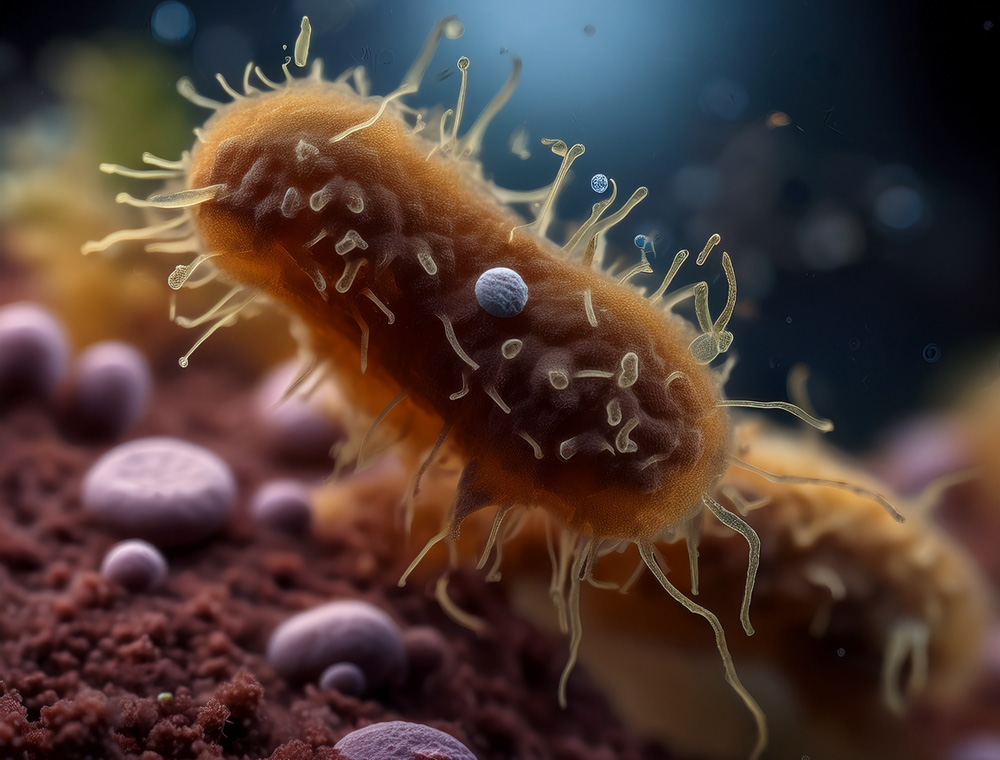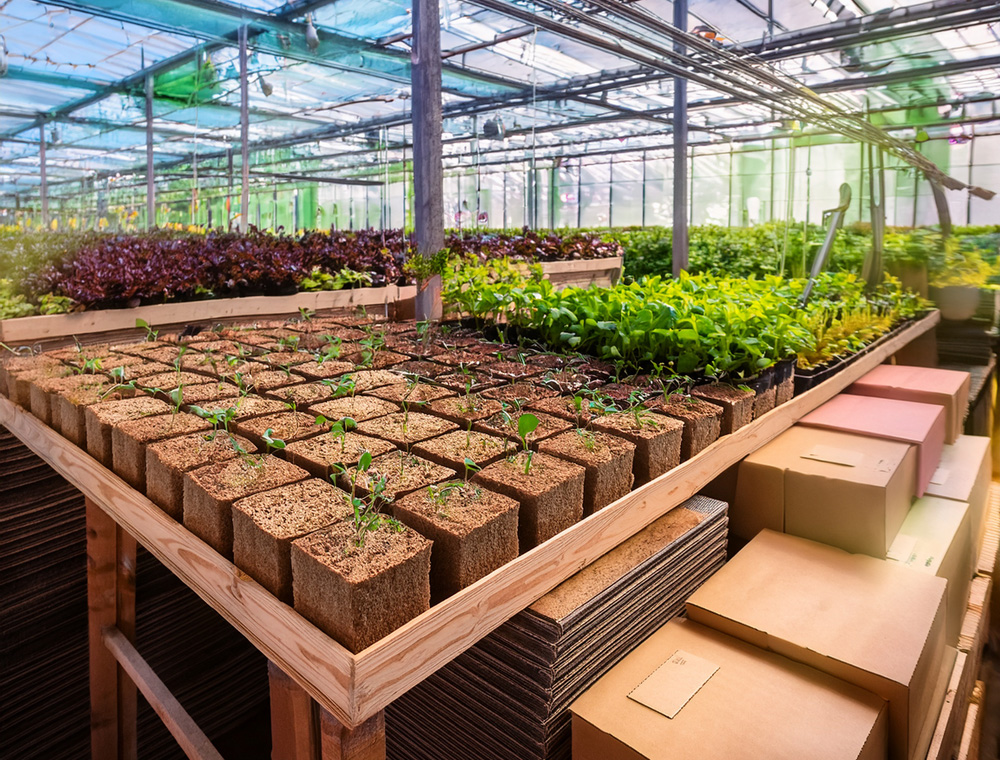The Role of Soil Enzymes
Introduction
As global populations soar toward 9.7 billion by 2050, agriculture faces mounting pressure to produce more food while mitigating environmental impacts (FAO, 2023). Soil degradation, nutrient depletion, and climate change threaten yields, with 33% of global soils already degraded (USDA, 2023). Traditional farming relies heavily on chemical fertilizers, contributing 1.6 kg CO2e/kg of ammonia production (Erisman et al., 2008). Sustainable alternatives are critical to ensure food security and ecosystem health.
Soil microbes, through their enzyme production, offer a transformative solution. These microscopic allies break down organic matter into nutrients plants can absorb, fostering a circular nutrient economy that reduces waste and emissions. Research, such as that conducted by Mammoth Ag, highlights how microbial enzymes enhance plant growth across ecosystems, from grasslands to Arctic tundra (Wallenstein & Burns, 2011). This white paper explores the science, applications, and challenges of leveraging microbial enzymes for sustainable agriculture, providing actionable insights for growers, researchers, and policymakers.
Microbial Enzymes: Nature’s Nutrient Cyclers
Ever wonder how microbes eat?
The core scientific team at Mammoth Ag has conducted years of research to best understand how enzymes function to support plant growth. We’ve studied how enzymes produced by bacteria and fungi influence soil function and plant production in a range of ecosystems ranging from grasslands to the Arctic, and in a variety of agricultural systems.
Enzymes are the tools that soil microbes use to make nutrients available for microbial and plant uptake. Plants don’t have mouths, and they can only take up nutrients by absorbing them through their cell wall. Enzymes are critical components to support plant growth because most of the organic material in soils and soilless media are too big and insoluble for plants to take up. Therefore, nutrients must first be broken into smaller molecules that the plants can use. To accomplish this, microbes produce enzymes– which are specialized proteins that catalyze the breakdown of large molecules into smaller molecules– and release them into the environment to break down nutrients into smaller forms that plants can uptake!
Carbon is the currency of all life on Earth, and plants get their carbon from the CO2 in the air. However, plants draw all other essential nutrients required for growth from the soil. Soil microbes produce the enzymes that cycle nitrogen, phosphorus and other nutrients to feed plants. Concurrently, plants feed the microbes using a variety of carbon-rich compounds that leak from plant roots, called exudates, as well as dead root cells. Microbes rely on their extracellular enzymes to break down different forms of carbon, which fuel their activity and growth, and enable them to cycle important macro and micro nutrients for both microbial and plant uptake.
Microbes tend to invest in producing enzymes to meet environmental nutritional needs. Depending on the relative availability of different elements, they focus on producing enzymes that release the nutrients that are most limiting. For example, to acquire phosphorus, microbes produce phosphatase enzymes. To acquire nitrogen, they produce enzymes like chitinases and proteases to break down nitrogen-rich organic compounds.
Beneficial bacteria support plant growth by acting like mini enzyme factories. By continuously producing enzymes, microbes ensure that nutrients are efficiently recycled and delivered to plants- and that waste products don’t accumulate in the soil and soilless media. For growers, it’s important to recognize that when enzyme-producing microbes are present, plants partner with them to efficiently cycle the nutrients in their environment. Additionally, beneficial bacteria help maintain the proper ratio of nutrients by shifting enzyme production to meet plant nutrient demands.
Using beneficial microbes will maximize plant nutrient uptake, development, quality and yield! In our research, we discovered that plant species influence microbial production of enzymes. For example, plants seem to influence microbes to produce nitrogen degrading enzymes, or phosphorus degrading enzymes so that plants can acquire the right amounts of each nutrient that they need to grow. Microbes help plants get the nutrients they need!
Scientific Foundations of Enzyme Activity
Soil microbes produce extracellular enzymes—specialized proteins that catalyze the breakdown of complex organic compounds into bioavailable nutrients (Sinsabaugh et al., 2008). These enzymes, such as phosphatases, proteases, and cellulases, target specific substrates (e.g., phosphorus, nitrogen, cellulose), enabling nutrient cycling in diverse ecosystems (Wallenstein & Weintraub, 2008). For example, in nitrogen-limited soils, microbes upregulate chitinases to release nitrogen from organic matter, as seen in Arctic tundra studies (Wallenstein et al., 2009).
Plant-microbe interactions in the rhizosphere are key. Plants exude carbon-rich compounds (e.g., sugars, amino acids), which stimulate microbial enzyme production (Bell et al., 2014). This symbiotic exchange, termed rhizosphere stoichiometry, ensures nutrient ratios match plant needs, with studies showing 20–50% increases in enzyme activity near roots (Burns et al., 2013). In grasslands, microbial communities adjust phosphatase production to address phosphorus scarcity, enhancing plant uptake by 30% (Arnosti et al., 2014).
Enzyme activity is sensitive to environmental factors like temperature and pH. Wallenstein et al. (2011) found that soil enzymes in Arctic soils exhibit temperature sensitivities, with activity rates doubling at 10°C increases. These dynamics inform sustainable farming by optimizing microbial function in varied climates, reducing reliance on synthetic fertilizers (Nannipieri et al., 2002).
Applications in Sustainable Agriculture
Microbial enzymes enhance sustainable agriculture by improving nutrient uptake, soil health, and crop yields. In agricultural systems, beneficial bacteria like Bacillus and Pseudomonas produce enzymes that recycle nitrogen and phosphorus, increasing yields by up to 15% in maize and wheat trials (USDA, 2023). In soilless media, such as hydroponics, enzymes prevent organic waste buildup, maintaining nutrient balance (Sinsabaugh et al., 2002).
Case studies highlight real-world impacts. In Colorado grasslands, microbial inoculants boosted soil nitrogen availability by 25%, reducing fertilizer use (Bell et al., 2014). Arctic experiments showed enzymes maintaining nutrient cycling under extreme conditions, supporting resilient agriculture (Wallenstein et al., 2009). These applications align with global sustainability goals, cutting CO2 emissions from fertilizer production by up to 0.4 kg CO2e/kg (Erisman et al., 2008).
For growers, microbial products offer practical benefits: enhanced plant quality, reduced input costs, and improved soil structure. Partnerships with companies like Growcentia enable tailored microbial solutions, with pilot programs reporting 10–20% yield increases in organic farming (FAO, 2023).
Challenges and Future Directions
Despite their potential, microbial enzyme applications face challenges. Enzyme stability varies with soil conditions, with activity declining in acidic or waterlogged soils (Wallenstein & Burns, 2011). Scalability is a hurdle; producing microbial inoculants at scale increases costs by 15–20% compared to chemical fertilizers (Burns et al., 2013). Knowledge gaps persist regarding enzyme interactions in diverse soils, requiring further research (Arnosti et al., 2014).
Future innovations include precision agriculture, where sensors monitor enzyme activity to optimize microbial applications (Nannipieri et al., 2002). Genetic engineering of microbes could enhance enzyme efficiency, potentially doubling nutrient release rates (Wallenstein et al., 2011). Policy support, such as subsidies for microbial products, could accelerate adoption, aligning with 2030 sustainability targets (FAO, 2023).
Conclusion
Microbial enzymes are pivotal for sustainable agriculture, enabling efficient nutrient cycling, reducing environmental impacts, and boosting crop yields. By fostering plant-microbe partnerships, growers can achieve resilient, high-quality production. Continued research and policy incentives are essential to overcome scalability and stability challenges, ensuring microbes play a central role in feeding a growing world. Stakeholders—growers, researchers, policymakers—must collaborate to harness this natural technology for a sustainable future.
References
- Wallenstein, M. D., & Burns, R. G., “Ecology of extracellular enzyme activities and organic matter degradation in soil: A complex community-driven process,” Methods of Soil Enzymology, SSSA Book Ser. 9, 35-56 (2011).
- Bell, C. W., et al., “High-throughput fluorometric measurement of potential soil extracellular enzyme activities,” J. Vis. Exp., (2013). DOI: 10.3791/50961
- Bell, C., et al., “Rhizosphere stoichiometry: Are C:N:P ratios of plants, soils, and enzymes conserved at the plant species-level?” New Phytol., 201, 505-517 (2014). DOI: 10.1111/nph.12531
- Arnosti, C., et al., “Extracellular enzymes in terrestrial, freshwater, and marine environments: Perspectives on system variability and common research needs,” Biogeochemistry, 117, 5-21 (2014). DOI: 10.1007/s10533-013-9906-5
- Bell, C., Stromberger, M., & Wallenstein, M., “New insights into enzymes in the environment,” Biogeochemistry, 117, 1-4 (2014). DOI: 10.1007/s10533-013-9927-0
- Burns, R. G., et al., “Soil enzymes in a changing environment: Current knowledge and future directions,” Soil Biol. Biochem., 58, 216-234 (2013). DOI: 10.1016/j.soilbio.2012.07.009
- Nannipieri, P., Kandeler, E., & Ruggiero, P., “Enzyme activities and microbiological and biochemical processes in soil,” Enzymes in the Environment, Marcel Dekker, New York, 1-33 (2002).
- Sinsabaugh, R. L., Carreiro, M. M., & Alvarez, S., “Enzyme and microbial dynamics of litter decomposition,” Enzymes in the Environment, Marcel Dekker, New York, 249-265 (2002).
- Sinsabaugh, R. L., et al., “Stoichiometry of soil enzyme activity at global scale,” Ecol. Lett., 11, 1252-1264 (2008). DOI: 10.1111/j.1461-0248.2008.01245.x
- Wallenstein, M. D., & Weintraub, M. N., “Emerging tools for measuring and modeling the in situ activity of soil extracellular enzymes,” Soil Biol. Biochem., 40, 2098-2106 (2008). DOI: 10.1016/j.soilbio.2008.01.024
- Wallenstein, M. D., et al., “A litter-slurry technique elucidates the key role of enzyme production and microbial dynamics in temperature sensitivity of organic matter decomposition,” Soil Biol. Biochem., 43, 1157-1166 (2011). DOI: 10.1016/j.soilbio.2011.02.009
- Wallenstein, M. D., McMahon, S. K., & Schimel, J. P., “Seasonal variation in enzyme activities and temperature sensitivities in Arctic tundra soils,” Glob. Change Biol., 15, 1631-1639 (2009). DOI: 10.1111/j.1365-2486.2008.01819.x
- Wallenstein, M. D., et al., “Controls on the temperature sensitivity of soil enzymes: A key driver of in situ enzyme activity rates,” Soil Enzymology, 245-258 (2011). DOI: 10.1007/978-3-642-14225-3_13
- Erisman, J. W., et al., “How a century of ammonia synthesis changed the world,” Nat. Geosci., 1, 636-639 (2008). DOI: 10.1038/ngeo325
- U.S. Department of Agriculture, “Soil Health and Sustainable Agriculture,” (2023). web:1 https://www.nrcs.usda.gov
- Food and Agriculture Organization, “Global Food Security Outlook,” (2023). web:2 https://www.fao.org








Leave a Reply